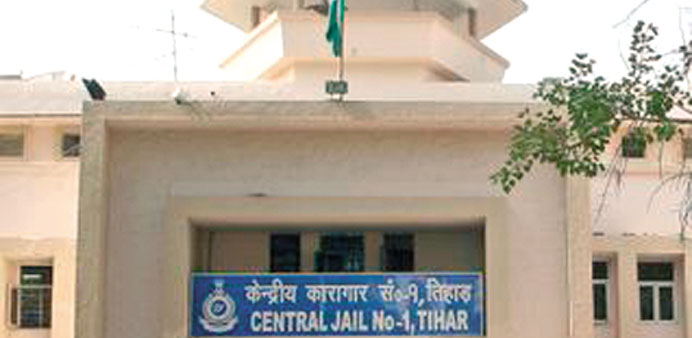Reuters/New Delhi
Authorities are scrambling to address how one of India’s most notorious prisoners, sharing a cell with three other inmates in the country’s most secure jail, was able to hang himself from an iron grille high above his head without anyone noticing.
At issue is last week’s apparent suicide of Ram Singh, the alleged ringleader in a case of gang-rape and murder that horrified India last December.
Reuters was unable to ascertain the full details of what went on behind the walls of New Delhi’s Tihar Jail and in Singh’s cell. But a jail official and one former inmate said it was impossible to keep a constant watch on prisoners in the sprawling and over-crowded facility.
“Committing suicide is very easy there. It’s not a big deal at all,” the former inmate said. He said he was imprisoned for two-and-a-half months last year and kept in the same building as Singh.
The man, who did not want to be identified, said an informal system of prisoners keeping watch over each other had broken down. Few cells had electronic surveillance, while guards came by only every half an hour or so.
A spokesman for the jail, Sunil Gupta, said it was impossible to monitor the prisoners tightly enough to prevent suicides.
“It is easy and it’s not unusual for suicides to happen in jail,” Gupta said in an interview conducted inside Tihar.
India was horrified by the crime Singh and five others were accused of - the gang-rape of a 23-year-old physiotherapy student on a bus. She and a male companion, who was beaten unconscious, were thrown out of the bus, naked and bleeding, after the assault. The student later died of her injuries.
Thousands of people held protest rallies for days, condemning the police for failing to prevent such crimes and demanding the death penalty for the assailants.
Singh’s death is now seen as another failure of the system.
“You could not prevent the rape,” said Suhas Chakma, the director of the Asian Centre for Human Rights.
“You cannot protect people outside, you cannot protect people inside the four walls of the prisons. It indicates absolute failure of the rule of law and also the governance system.”
Some rights activists have raised fears that Singh’s death could undermine the trial of the other four adults, now underway. The final accused is a juvenile, who is being held and tried separately.
However, legal experts say the death will not affect the prosecution’s case.
Authorities in Tihar said Singh hanged himself early on Monday morning in his cell. They said he made a noose from the mat he slept on and hanged himself from a grille in the ceiling.
Singh’s father said he did not believe his son had committed suicide and suspected that he had been murdered. “He confessed about his mistake, then why would he commit suicide? He was prepared for any punishment the government would have given him,” Mange Lal Singh said.
Authorities have conducted a postmortem on Singh’s body and a medical officer who had direct knowledge of the findings told Reuters there were no injuries other than those associated with asphyxiation.
“As per our study, it seems and it appears to be a case that is suicidal in nature,” the source said.
Tihar has won a reputation as a model prison, with counselling, yoga classes and meditation rooms for inmates.
However, many ills linger just below the surface. It remains India’s largest prison and more than 12,000 prisoners are packed into a facility meant for 6,250.
“We cannot put one guard with one prisoner, we can’t even put one guard with ten prisoners,” said Gupta, the prison spokesman.
“We have 12,500 prisoners here. If an inmate wants to go to the bathroom, he can easily commit suicide there. Even though we are watching, these cases can take place because security cannot solve everything.”



